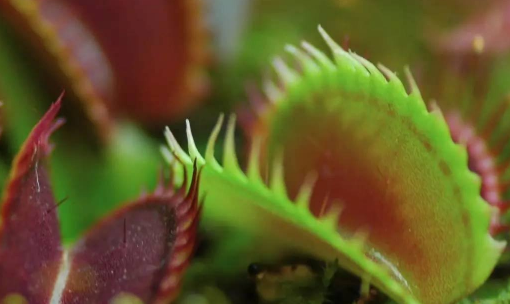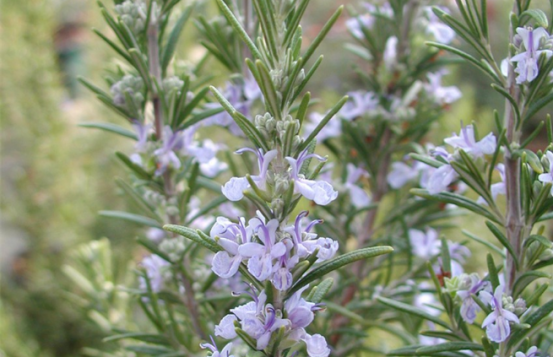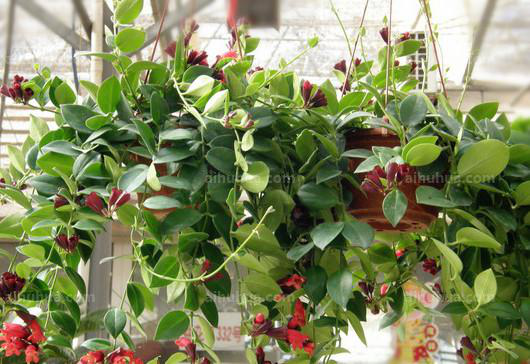Propagation method of Castanopsis thunbergii
Cuttage propagation
Introduction
Although there are many varieties of thatched vegetable, but most of them can be propagated by leaf cutting, so we generally use leaf cuttage in cuttage propagation, of course, it is OK to use sturdy stalk for cuttage.
Operation method
When cutting leaves, first cut off the whole leaves, and then insert the leaves flat or obliquely into the soil to keep the soil moist and ensure sufficient light. About a month or so, the leaves of the cuttings will take root. At this time, the rooting leaves can be planted.

Sowing and reproduction
Introduction
Castanopsis thunbergii will produce very small seeds after flowering, with which we can sow!
Operation method
First of all, prepare the appropriate soil, and then sow the collected seeds directly on the soil, pay attention to sowing evenly, do not need to cover the soil. After sowing, the flowerpot should be placed in an environment with sufficient light, high humidity and suitable temperature, and it will sprout in a month. If the variety is temperate, low temperature stimulation should be carried out to help sprout.
Winter bud propagation
Introduction
Some varieties of Castanopsis thunbergii in temperate regions grow some buds under the stimulation of low temperature in winter. We call these buds winter buds. Winter bud propagation is a very fast way of reproduction.
Operation method
Pick the bulbs carefully with a toothpick because they cannot be preserved for a long time. So sow the seeds immediately after picking, and keep the suitable environment after sowing. The bulbs sown can sprout in just two weeks.
How to raise Castanopsis thunbergii cultivation methods and matters needing attention
Although the name looks like the name of a vegetable, but in essence, it should be an ornamental plant. As for why it is called Maogao, the clever editor does not know, but will you know if it is smarter? The method of planting thatched vegetable and the nursing care of it are described in detail.
How to raise thatched vegetable
Castanopsis thunbergii is a plant that likes Shenzhen in relatively humid places, where it often grows by the water or moist meadows. The leaves are rich in color, with glandular hairs that secrete mucus on the surface of the leaves and white or red flowers.
Because these glandular hairs on the leaves can secrete mucus and look as if they are covered with dewdrops and are crystal clear. This mucus can stick insects like sticky paper and then digest and absorb them.
Culture methods and matters needing attention of Castanopsis thunbergii
1. Soil
Castanopsis thunbergii does not have high requirements for soil, you can use peat soil, perlite and river sand mixed soil, can also use water moss or pure peat soil.
2. Light and temperature
Maogao vegetables like the sun, sufficient light is conducive to bright colors, in the maintenance of Maogao vegetables, need to maintain a long time of light every day, placed on the balcony or windowsill. If there is no way to directly contact the direct light, it can also provide bright scattered light. Be aware that when the summer light is strong, shade is needed to avoid burns. Castanopsis thunbergii does not like too cold or overheated environment, the suitable temperature for growth is between 15 ℃-25 ℃, it needs to be kept warm in winter, the lowest temperature needs to be kept above 0 ℃, and indoor maintenance is necessary; in summer, too high temperature will enter dormancy.
3. Watering and fertilizing
Thatched vegetable can withstand moisture, but the requirement of air humidity is not high, but the humidity should not be too high in summer to avoid stem and leaf rot. Watering needs to keep the soil moist, generally can be used "waist water" method of water supply, watering the best soft water. Fertilization is to apply work fertilizer thinly, in the growing season, apply thin liquid fertilizer once or twice a month, pay attention to the concentration to avoid fertilizer damage.
4. Methods of reproduction
The propagation of Castanopsis carlesii can be cut, generally by the way of leaf cutting, or by taking off the small bulbs on the plant and planting in time, and it is also relatively simple to sow seeds by sowing and propagation.
5. Diseases and insect pests
In the course of its growth, it will encounter the harm of some pests in spring and summer, such as aphids, green insects and ground tigers, which may eat the leaves of the vegetable. Once found, they need to be caught and killed in time. Insecticides can be used if necessary.
Nursing of Castanopsis thunbergii after sowing
1. Spray water
Spray water on the vegetable with spray, be careful to spray, otherwise the seeds may be washed away. Then put the flowerpot on the inside of the sunlit windowsill. If you are growing in a basin, you need to cover the plastic at the top to keep the humidity. Pay attention to rehydration at all times.
2. Germination and emergence
Under excellent conditions, the vegetable can sprout in about 30 days and seedling in about 15 days.
3. Transplant
If the vegetable grows up and grows too dense, it can be transplanted with soil. Be careful not to hurt the root when transplanting.
4. Lighting
Most of the vegetables like the sun and are sun-resistant. They can be placed on a windowsill with plenty of light and can be exposed to the sun for more than four hours every day. If the northern territory receives all-day direct sunlight, the color of the vegetable will be very bright. Less than four hours of direct sunlight may lead to poor growth. It should be noted that do not let the vegetable can not receive direct sunlight for a long time, otherwise it will die. But if the plant is love thatch and fork thatch ointment, then pay attention to avoid direct sunlight, should be placed in a cool, weak place. Because they grow in woodland and the light is weak. Therefore, it is different from the maintenance method that requires direct sunlight in the Northern Territory.
5. Humidity
Mao paste vegetables do not have too many requirements for humidity, just keep it at 40% Murray 90%. But in the hot summer, the humidity can not be maintained at about 90%, otherwise the stems and leaves will rot. If there is stem and leaf rot, please ventilate in time.
Cuttage Propagation of Castanopsis thunbergii
As the vast majority of varieties of Castanopsis thunbergii can be used for leaf cutting, so the general choice of cutting propagation is to use leaf cuttage, of course, you can also choose a stronger stem for cutting. The specific method is to cut off the whole leaf, and then put the leaf flat or oblique in the soil, at this time to keep the soil moist and sufficient light, about a month, the cutting leaves will take root, at this time we can plant the rooting leaves.
It is said that the seeds of Castanopsis thunbergii are very small, so it is not advantageous to propagate by sowing, so we usually use cutting and transplanting when planting. As for the specific how to operate, focus on getting rich hot, it can help you reveal the answer!
How about Castanopsis thunbergii? the culture method of Castanea mollissima
The leaves of Castanopsis grossedentata are covered with crystal-clear "dewdrops", which are dazzling and deeply loved by people. So, how to raise thatched vegetables? Many people say thatched vegetable is not easy to raise, in fact, it is relatively easy to raise thatched vegetable, a little heart can grow very well. Today, let's teach everyone how to raise toothpaste vegetables. Come and learn how to grow toothpaste vegetables together.
How to raise thatched vegetable
Soil: in addition to bulbous thatched vegetables, other kinds of thatched vegetables do not have high requirements for soil, can use pure water moss, can also use two portions of water moss and peat mixed with perlite, and have added a matrix such as red jade soil, bark, vermiculite and so on. Bulbous grass extract can use granular soil, such as basin immersion culture can use 1 part of peat, 1 part of perlite or river sand mixture.
Lighting: thatched vegetables like plenty of sunlight, exposure resistance, suitable for placed on the balcony or window with good light, if it can provide direct light throughout the day, it will show a very bright color, and the mucus will become more sticky. If there is no good lighting environment, bright scattered light should be provided throughout the day.
Humidity: Mao paste vegetables do not have high requirements for humidity, which needs to be controlled at 40%, 90%. Higher humidity can make the "dewdrops" of glandular hairs bigger and more ornamental. When the air humidity is not high in the plum rain season, attention should be paid to strengthening ventilation, which may cause the stems and leaves of thatched vegetables to rot.
Watering: Mao paste vegetables are usually more resistant to moisture, and the soaking pot method can be used for water supply, that is, flowerpots are placed in containers with water, such as water plates and glass vats, so that the water can infiltrate into the whole flowerpot by itself, as long as there is about 1 cm of water in the water plate. to keep the matrix moist. Mao paste vegetables have high requirements for water quality, and soft water with low content of calcium, magnesium and other minerals should be used when watering.
Fertilization: in the growing season, it is necessary to use general compound fertilizer and other diluted 5000 times to spray foliar, 1-2 times a month. Fertilization would rather be applied with thin fertilizer frequently, not too high concentration, so as to avoid serious consequences of fat injury or even death. Do not apply fertilizer at will without experience. Feeding is not recommended to provide nutrients so as not to affect the ornamental quality.
Diseases and insect pests: in spring and summer every year, the new buds of Castanopsis thunbergii may be attacked by aphids, causing abnormal growth or wilting of leaves. When green insects, ground tigers and other pests are likely to gnaw on the leaves of thatched vegetables, when the leaves are found to have been eaten, they should be caught and killed in time, or broad-spectrum (general-purpose) pesticides can be used to kill them, and wet the leaves when using them. Do not spray too much.
Varieties of Castanopsis carlesii
Nest-shaped thatched vegetable
The nest-shaped thatch vegetable originates in the remote mountains of South Africa, where the climate is stable all the year round and does not exceed 33 degrees in summer. In cultivation, nest-shaped and Cape of good Hope are the first choice for upright thatch ointment, but nesting-shaped thatch ointment is more delicate and should be afraid of heat, so it is suitable for cultivation with breathable medium.
Cape of good Hope
This is the most famous thatched vegetable, the tall and powerful image is deeply rooted in the hearts of the people, the leaves are very exaggerated, in the origin of South Africa is a lowland thatch vegetable, with a number of individuals, a bit afraid of heat in cultivation, ventilation and shade farming in summer, autumn will be very beautiful.
Silk leaf thatch extract vegetable
Silk leaf grass extract can be roughly divided into red silk leaf, green silk leaf, common silk leaf, of which red silk leaf is the most famous variety. In the cultivation of a little afraid of heat, summer to avoid the noon shade, but also regarded as an entry-level variety of temperate thatched vegetables, worth collecting.
Other varieties of thatch ointment include Belle thatch extract, forked leaf thatch ointment, Afinis thatch ointment, Haberidi ointment, Alice thatch ointment, peacock thatch ointment, imperial thatch ointment, Bermanimo ointment and so on.
The above is for you to talk about the cultivation method of thatched vegetable, have you all learned it? Please pay attention to more knowledge of home decoration.
- Prev

How to raise rosemary?
1. Light and temperature. Rosemary likes a warm and suitable environment. It can be planted all the year round in the south, while it is mostly used in pot culture in the north, which is conducive to moving indoors for warmth in winter. Rosemary likes sunlight, and it should have no less than 8 hours of sunlight every day. In summer, high temperatures can be appropriately shaded. 2. Soil
- Next

Propagation method of Crocus sativus L.
Among the propagation methods of saffron, cutting is a more convenient method, and the survival rate of cutting is higher, for family breeding friends, the maneuverability of cutting is also strong. Cutting propagation of lipstick flowers can be carried out all the year round if the temperature is right. But want a higher survival rate.
Related
- Fuxing push coffee new agricultural production and marketing class: lack of small-scale processing plants
- Jujube rice field leisure farm deep ploughing Yilan for five years to create a space for organic food and play
- Nongyu Farm-A trial of organic papaya for brave women with advanced technology
- Four points for attention in the prevention and control of diseases and insect pests of edible fungi
- How to add nutrient solution to Edible Fungi
- Is there any good way to control edible fungus mites?
- Open Inoculation Technology of Edible Fungi
- Is there any clever way to use fertilizer for edible fungus in winter?
- What agents are used to kill the pathogens of edible fungi in the mushroom shed?
- Rapid drying of Edible Fungi

